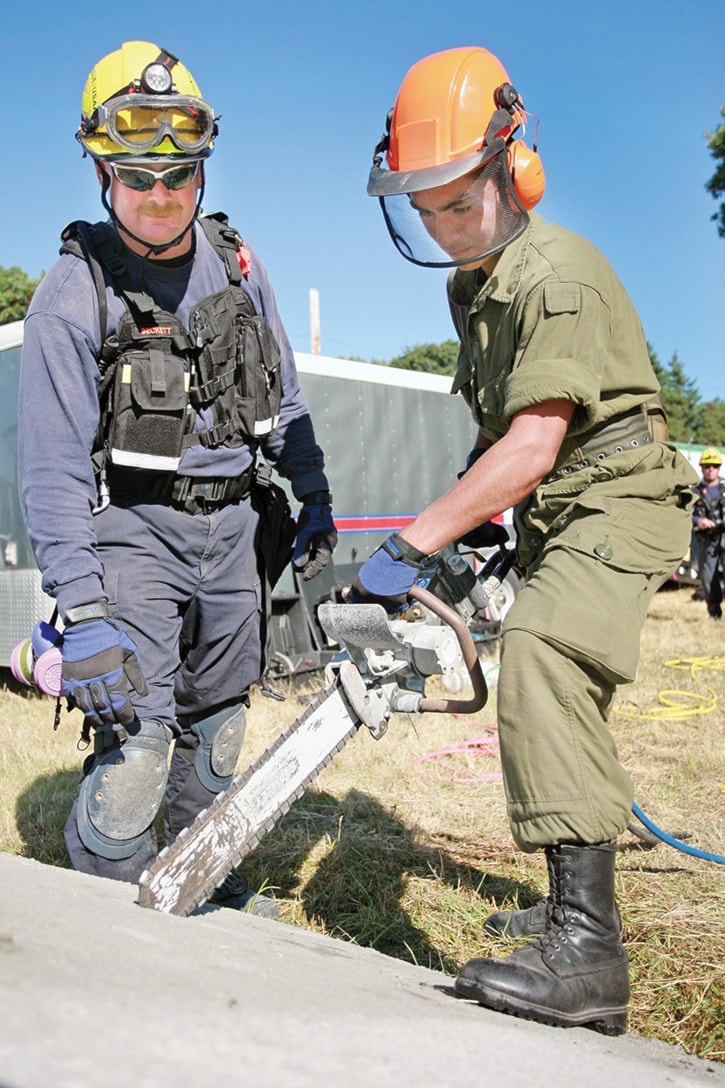Search and rescue groups from across Greater Victoria joined together this week to help educate young campers at the Albert Head Cadet Summer Training Centre.
The one-day event included presentations from CFB Esquimalt Urban Search and Rescue team, Victoria Urban Search and Rescue, Metchosin Search and Rescue – complete with rescue dog – and the Metchosin Emergency Program.
“Learning about search and rescue is a part of our basic training. Today they are learning (more) about urban aspects of search and rescue. We don’t usually cover that,” said officer cadet Sarah Lumley, who was working at the camp.
Commander Glenn Cooper of CFB Esquimalt’s team spoke to 50 cadets from across the province on how to be prepared in the event of an earthquake.
“Hopefully we will never have to try out these techniques,” he said.
Cadet Thomas Hadizadeh, from Vancouver, was very interested in learning how to rescue civilians from a collapsed building.
He and the rest of the cadets learned how to drill and cut through concrete to rescue trapped people.
“It’s really scary to think about, but it’s important to know because you know (the big one) is going to happen. I am most amazed to learn that wood can hold 600 pounds at the point of contact,” Hadizadeh said.
“I am also really interested in learning how to be self sufficient in case I ever get separated from the group.”
Stephanie Dunlop, Metchosin emergency program co-ordinator, talked to the teen cadets about emergency kits and what survival gear to pack.
“I want to teach the cadets to be prepared for every situation whether they are out camping, driving on the roadway or at home,” Dunlop said.
She stressed it’s always important to have some form of communication on hand at all times, including radio, a cellphone or GPS device.
Other important items to pack include flashlights and protective clothing or barriers, for both hot and cold weather.
David Richardson, the rescue dog handler with Metchosin Search and Rescue team, explained to cadets how he trains his dog Mack, a border collie. The dog uses both tracking and air scent techniques to locate people.
When tracking, the dog is on a harness with his nose to the ground following one particular scent. When using air scent to track missing persons, a dog wanders and follows any human scent he can find.
“We mostly use air scent, because often our subjects have been missing for eight to 12 hours,” Richardson said. “We have to train him in a very positive way, you can’t train a rescue dog without positive reinforcement.”
Richardson and Mack have attended 38 incidents in the dog’s three years on the job.
The cadet camp runs through Aug. 16 at Albert Head.
charla@goldstreamgazette.com
